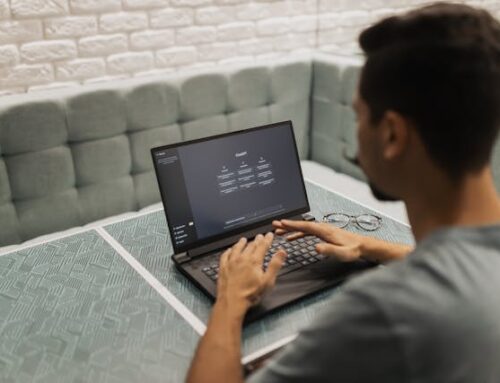 We are no strangers to the fact that naming a treatment option something like “qEEG-based swLoreta neurofeedback” might seem a little bit… intimidating. (Not to mention the electrode-laden skullcaps and the soft needle syringe full of goo.) With this in mind, it seems like a good idea to untangle all the jargon and acronyms and offer a simple, concise summary of exactly what neurofeedback is, how it works, and how it may help you address the struggles you may be facing with the functioning of your neural networks that regulate your attention, your mood, your focus, your sleep, etc.
We are no strangers to the fact that naming a treatment option something like “qEEG-based swLoreta neurofeedback” might seem a little bit… intimidating. (Not to mention the electrode-laden skullcaps and the soft needle syringe full of goo.) With this in mind, it seems like a good idea to untangle all the jargon and acronyms and offer a simple, concise summary of exactly what neurofeedback is, how it works, and how it may help you address the struggles you may be facing with the functioning of your neural networks that regulate your attention, your mood, your focus, your sleep, etc.
A Brief History of Neurofeedback
The initial discovery that the brain produces electrical current through its activity dates back to the mid-19th century, but it took around a century of further study before a possible clinical application of this knowledge was recognized. By the 1960s, we had figured out that different kinds of brain activity produced varying but consistent frequencies of electromagnetic waves, and we knew that a great deal of information about the functioning of the brain could be extrapolated by, in a sense, “mapping” these waves and analyzing their activity. Early in the decade a scientist at the University of Chicago named Dr. Joe Kamiya found that some of his patients were able to learn how to control their brainwaves directly when they were provided with some means of representing their activity; that is to say, when provided “feedback” on their brainwave activity, it became possible (with appropriate training as well as some practice) to consciously alter that activity. As groundbreaking as such a discovery might have been, however, it wasn’t until the 1990s when the combination of increased computer power and a surge of public interest in neurological topics in general (anyone else remember President Bush Sr.’s “Decade of the Brain?”) when the pace of research accelerated and the clinical practice of neurofeedback began to hit its stride. Which brings us, more or less, to the present, where neurofeedback research and its attendant applications continues to develop rapidly in exciting new directions all the time.
Today’s Neurofeedback Training – Neural Networks Dynamics
 Now in order to explain what it is that’s actually going on during neurofeedback treatment, we’ll need to establish some brain basics. You may know that the brain is a gelatinous mass suspended in fluid and comprised of special cells called neurons that are in constant communication with one another. That communication is conducted by means of electrical signals that underlie pretty much every function of the brain that we’re aware of. For our purposes we can imagine neurons as being comprised of two main parts: the nucleus, in the center of the cell where these “messages” originate and get processed, and the ganglia, which protrude in a weblike fashion from the cell and carry the electricity that constitutes this communication. Crucially, neurons are multipolar, meaning essentially that at any given moment a single neuron is receiving communication from many different other areas of the brain at once that the nucleus is responsible for aggregating, integrating, interpreting and responding to. Now neuroscience tells us that particular functions of the brain are localized to specific structures within the brain that communicate along specific dedicated neural networks, such as those responsible for processing sensory input, facilitating the flow of information in and out of memory, focusing on tasks, regulating emotions, and so on.
Now in order to explain what it is that’s actually going on during neurofeedback treatment, we’ll need to establish some brain basics. You may know that the brain is a gelatinous mass suspended in fluid and comprised of special cells called neurons that are in constant communication with one another. That communication is conducted by means of electrical signals that underlie pretty much every function of the brain that we’re aware of. For our purposes we can imagine neurons as being comprised of two main parts: the nucleus, in the center of the cell where these “messages” originate and get processed, and the ganglia, which protrude in a weblike fashion from the cell and carry the electricity that constitutes this communication. Crucially, neurons are multipolar, meaning essentially that at any given moment a single neuron is receiving communication from many different other areas of the brain at once that the nucleus is responsible for aggregating, integrating, interpreting and responding to. Now neuroscience tells us that particular functions of the brain are localized to specific structures within the brain that communicate along specific dedicated neural networks, such as those responsible for processing sensory input, facilitating the flow of information in and out of memory, focusing on tasks, regulating emotions, and so on.
Recording and Brainmap at 19 Sites (qEEG)
Thus we can understand how the initial qEEG recording can provide a “map” of an individual brain’s baseline functioning: by measuring the level of current going to and from various parts of the brain whose functions we understand, and then comparing it to a normative database of aggregated data from many subjects, we can assess the functional state of a given neural network or structure and identify potential neurological sources for the issues that the patient is presenting for treatment. Circling back to the imagery invoked at the beginning of this article, the electrodes in those funny-looking skullcaps are placed to correspond to the locations of particularly important structures in the brain, and the goop is a conductive gel meant to facilitate the measurement of electrical signals generated by them bringing them to the computer with the programs to record and then later on analyze the brain maps. Mind you, the microcurrent from your brain flows through the electrocap attached to the amplifier and from there is mapped into the computer in the form of brainwaves – your brain’s electrical activity.
Real Time Feedback with swLORETA
All of which is to say that in concept the neurofeedback treatment is fairly simple: many neuropsychological and neurological issues that people face every day are positively correlated with either too much or too little activity along a given network – i.e. too much or too little electricity – which can be represented to the patient visually and in real time; and as Dr. Kamiya discovered back in the early 60s, providing the patient with real-time “feedback” on the electricity being exchanged by their neurons (and the appropriate training by the practitioner) can enable to exert conscious control over it, empowering the patient to instrumentalize their own innate brain power as a corrective. If this sounds outlandish to you, it’s worth mentioning that human beings are not born with the neural equipment to read these words and understand their meaning. At some point in our evolution, we developed various techniques to quite literally wire our neural connections to allow for the intraneural communication necessary to facilitate reading and writing, even if by now those techniques are deeply embedded in our collective memory. Neurofeedback treatment operates on a similar basis. swLORETA Neurofeedback training allows not only cortical or surface centers but also subcortical formations centers underneath the cortex to be engaged in the training process. For instance, the amygdala, an important subcortical formation with great implications in our feeling safe or anxious is part of the subcortical formations that no other form of neurofeedback can engage in the training as well as swLORETA Neurofeedback.
Dr. Sacarin herself is a practitioner that follows the forefront developments of neurofeedback and is in regular professional contact with many of the world’s preeminent experts in the field. If you’re curious about how qEEG-based neurofeedback therapy may be able to help you or someone you know who feels a need to optimize their brain’s functional capacity, decrease anxiety and learn to be more balances click here to learn more Anxiety Treatment.




